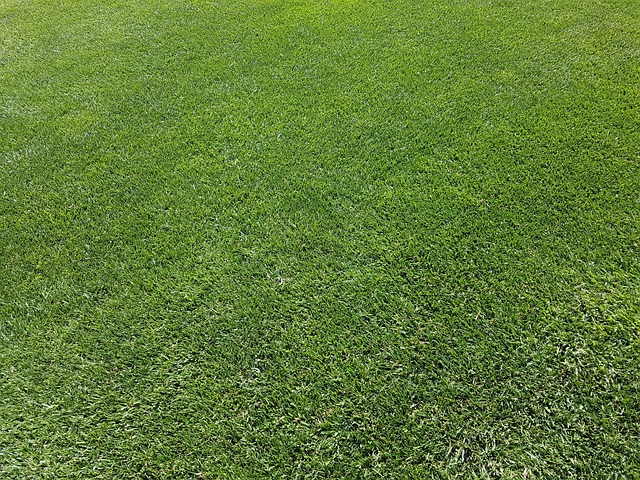Lawn Care Fundamentals: Professional Landscaping Solutions for Healthy Greens
Lawn care and landscaping transform outdoor spaces into thriving green oases through strategic pract…….
We are At Your Service
In the realm of urban and rural landscapes, lawn care and landscaping stand as essential practices that transform bare patches of earth into lush, vibrant oases. This art and science involves not just maintaining grass but also designing, cultivating, and preserving outdoor spaces that enhance aesthetics, promote biodiversity, and contribute to overall well-being. From meticulously manicured gardens to vast public parks, lawn care and landscaping shape the visual tapestry of our communities.
This comprehensive article delves into the multifaceted world of lawn care and landscaping, exploring its historical roots, global impact, economic significance, technological innovations, regulatory frameworks, challenges, and future prospects. By the end, readers will gain a profound understanding of this dynamic field and its pivotal role in shaping our environment and communities.
Definition: Lawn care and landscaping encompass a range of practices aimed at cultivating and enhancing outdoor areas, primarily focusing on grass lawns but also including plant life, water features, and hardscape elements. It involves planning, planting, maintenance, and aesthetic design to create functional and visually appealing spaces.
Core Components:
Historical Context: The practice of landscaping can be traced back to ancient civilizations like the Egyptians and Greeks, who meticulously designed their gardens and public spaces. However, modern lawn care and landscaping gained prominence in the 19th and 20th centuries with the rise of urban areas and a growing appreciation for well-designed outdoor spaces. The Industrial Revolution brought new materials and technologies, allowing for more intricate hardscape features.
Lawn care and landscaping transcend geographical boundaries, influencing communities worldwide with its ability to enhance quality of life and foster a connection to nature.
North America: Known for its expansive front lawns and meticulously maintained public parks, the United States and Canada have a deep-rooted culture of lawn care. However, there’s a growing trend towards more sustainable practices, with an emphasis on native plants and water conservation.
Europe: European landscapes showcase diverse styles, from formal French gardens to sprawling English countryside. The continent leads in urban greening, with cities like Berlin and Stockholm integrating green spaces into their urban fabric, improving air quality and citizen well-being.
Asia: Japan’s traditional Zen gardens and China’s iconic rock gardens demonstrate a unique approach to landscaping that emphasizes simplicity and harmony. In recent years, Asian cities have seen an increase in rooftop gardening and vertical landscapes to combat limited green spaces.
Latin America: Brightly colored flowers and vibrant vegetation define many Latin American landscapes. Countries like Brazil and Mexico are known for their lush public parks and colorful street plantings, reflecting a strong cultural connection to nature.
Australia and New Zealand: With their unique flora, these regions have embraced native landscaping, promoting biodiversity and water conservation. Their harsh climate demands innovative irrigation systems and drought-resistant plants.
The lawn care and landscaping industry is a significant contributor to global economies, offering both direct and indirect employment opportunities while enhancing the value of properties and improving community aesthetics.
| Economic Aspect | Description |
|---|---|
| Market Size | According to a 2021 report by Grand View Research, the global landscaping market size was valued at USD 157.3 billion in 2020 and is expected to grow at a CAGR of 6.7% from 2021 to 2028. |
| Employment | The industry employs millions worldwide, ranging from small local landscaping companies to large multinational corporations. In the U.S., lawn care and landscaping services supported over 1.3 million jobs in 2020, according to the National Association of Landscape Professionals (NALP). |
| Property Value Enhancement | Well-maintained landscapes can increase property values by up to 15%, making it an attractive investment for homeowners and real estate developers alike. |
| Tourism and Recreation | Beautifully landscaped public parks and green spaces attract tourists, boost local economies, and provide recreational areas for residents, contributing to overall community well-being. |
Technological innovations have transformed lawn care and landscaping, improving efficiency, sustainability, and customer satisfaction.
Smart Irrigation Systems: These systems use sensors and weather data to deliver precise amounts of water, reducing waste and promoting drought tolerance.
Drones for Inspection and Maintenance: Aerial drones equipped with high-resolution cameras can inspect large properties, identify issues, and plan maintenance efficiently.
GPS-Guided Equipment: Mowers, trimmers, and edgers fitted with GPS technology ensure precise, consistent cuts, reducing labor costs and improving productivity.
Plant Identification Apps: Smartphone apps like PlantNet and PictureThis enable landscapers and homeowners to identify plant species quickly, aiding in proper care and maintenance.
Virtual Design Tools: 3D landscape design software allows clients to visualize their dream landscapes before investment, enhancing client communication and satisfaction.
Governments worldwide have implemented policies and regulations to ensure sustainable and responsible landscaping practices, addressing environmental concerns and promoting public safety.
Zoning Laws: Many municipalities have zoning ordinances that dictate land use, including restrictions on landscape alterations and requirements for specific types of vegetation.
Water Conservation Regulations: Strict water usage guidelines, especially in drought-prone areas, encourage efficient irrigation systems and the use of native, low-maintenance plants.
Pest Management Policies: Some regions mandate integrated pest management (IPM) practices to minimize the use of harmful chemicals and promote environmentally friendly pest control methods.
Disaster Preparedness: Landscaping regulations in hurricane or wildfire-prone areas may require specific plant choices, buffer zones, and hardscape features to mitigate damage.
Despite its numerous benefits, the lawn care and landscaping industry faces several challenges that hinder sustainable growth.
1. Water Consumption: Traditional lawn care practices, especially in regions with water scarcity, contribute to excessive water usage.
Solution: Adopt smart irrigation systems, drought-tolerant plants, and water recycling methods. Promote public awareness campaigns on responsible watering.
2. Chemical Usage: Pesticides, herbicides, and fertilizers can harm the environment and human health if misused.
Strategy: Encourage organic and natural solutions, educate professionals and homeowners about safe chemical handling, and support research into environmentally friendly alternatives.
3. Labor Shortages: The industry often struggles with workforce shortages, impacting service quality and accessibility.
Action Plan: Provide training programs, improve working conditions, and promote the profession to attract and retain a skilled workforce.
4. Lack of Education: Many homeowners lack knowledge about proper lawn care, leading to over- or under-application of treatments.
Initiative: Develop educational campaigns, workshops, and partnerships with local schools to raise awareness and foster a culture of responsible landscaping.
This iconic urban transformation project turned a historic freight rail line into a sprawling green space, showcasing innovative landscaping and community engagement. The High Line features native plants, art installations, and public seating areas, attracting millions of visitors annually. It exemplifies how derelict urban spaces can be revitalized through creative design and community involvement.
A global landmark for sustainability, the Eden Project is an eco-friendly landscape that houses massive biomes containing diverse plant species from around the world. This case study demonstrates the power of landscaping in educating visitors about environmental issues and promoting biodiversity.
Many cities are embracing rooftop farming as a sustainable solution for limited green spaces. For example, Chicago’s Green Roof Alliance has transformed numerous buildings into urban oases, providing food production, insulation benefits, and improved air quality. This approach showcases how landscaping can adapt to urban challenges while promoting local food systems.
The lawn care and landscaping industry is poised for significant growth, driven by technological advancements, changing consumer preferences, and a growing focus on sustainability.
Sustainable Practices: There will be an increased emphasis on eco-friendly products, organic solutions, and water conservation techniques. Native plant landscapes and drought-tolerant designs will become more common.
Technology Integration: Drones, AI-powered apps, and smart home technology will play a larger role in property maintenance, offering convenience and efficiency. Virtual design tools will enable clients to visualize and customize their outdoor spaces virtually.
Urban Greening: Cities worldwide will continue to prioritize urban greening initiatives, incorporating green roofs, vertical gardens, and street trees to combat urban heat islands and improve citizen well-being.
Remote Services: Tele-landscaping and remote monitoring of properties using IoT devices will become more prevalent, allowing professionals to provide services efficiently while reducing travel costs.
Global Collaboration: As the industry grows globally, collaboration between landscaping professionals, researchers, and policymakers will be crucial for sharing best practices and addressing common challenges.
Lawn care and landscaping are more than just outdoor maintenance; they are essential tools for enhancing our living environments, fostering biodiversity, and promoting human well-being. From ancient gardens to modern urban oases, this art and science has evolved dynamically, adapting to cultural preferences, technological advancements, and environmental considerations.
As the world grapples with climate change, water scarcity, and urban expansion, responsible landscaping practices become increasingly vital. By embracing sustainable solutions, integrating technology, and fostering global collaboration, the industry can contribute to a greener, healthier planet. From public parks to private residences, well-designed landscapes have the power to inspire, connect us with nature, and create vibrant, resilient communities.
Q: How do I choose the right plants for my lawn?
A: Consider your climate zone, soil type, and available sunlight. Native plants are generally easier to maintain and provide habitat for local wildlife. Consult with a local nursery or landscape designer for personalized recommendations.
Q: What are some eco-friendly alternatives to traditional pesticides?
A: Organic pest control methods include using beneficial insects, plant extracts, and natural predators. Neem oil, garlic spray, and diatomaceous earth are popular options. Local extension services can provide guidance on safe and effective organic pest management.
Q: How often should I water my lawn?
A: The frequency depends on your climate, soil type, and grass species. Generally, deep watering once a week is better than frequent shallow watering. Morning watering reduces evaporation, and using drip irrigation or smart sprinklers can help conserve water.
Q: Can landscaping contribute to flood prevention?
A: Absolutely! Strategically placed plants, buffers, and natural drainage systems can reduce runoff and absorb excess water during heavy rains, minimizing flooding risks. Rain gardens and bioswales are effective flood mitigation techniques.
Q: How do I create a low-maintenance landscape?
A: Choose drought-tolerant plants, use mulching to retain soil moisture, and select hardy grass varieties that require less frequent mowing. Efficient irrigation systems and regular maintenance scheduling can also reduce overall effort.

Lawn care and landscaping transform outdoor spaces into thriving green oases through strategic pract…….

Maintaining a lush lawn requires a balanced approach to Lawn Care and Landscaping. Regular mowing at…….

Mulching and edging are Lawn Care and Landscaping practices that significantly enhance soil health,…….

Tree trimming and pruning are essential practices in Lawn Care and Landscaping, promoting tree healt…….

Tree trimming and pruning are essential practices in Lawn Care and Landscaping, enhancing tree healt…….

Lawn Care and Landscaping professionals emphasize the significance of tree trimming and pruning for…….

Transforming your yard into a vibrant oasis requires assessing its landscape, practicing fundamental…….

Regular lawn care and strategic landscaping are crucial for achieving a lush, healthy garden. Practi…….

In the digital age, professional Lawn Care and Landscaping services have evolved into artistic solut…….